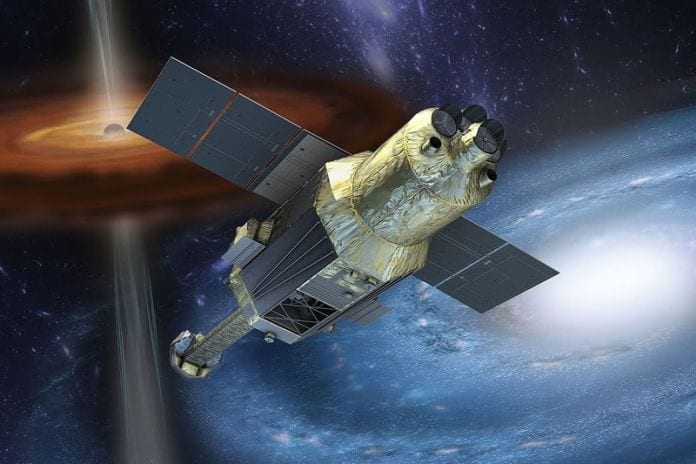Japanese astronomical satellite Hitomi was also known as ASTRO-H, which was successfully launched on February 17, 2016, but on March 26 an accident occurs, leaving only the floating parts in space. On April 28, researchers stopped trying to restore the operation of the satellite and are now trying to determine the cause of the failure or crash. On March 26, Japanese astronomical satellite Hitomi has completed the maneuver and aimed the Japanese astronomical satellite Hitomi at a galaxy Markarian 205. By controlling the location of the satellite, thus, the attitude control system (ACS) began using the star tracker system data. At some point, star tracker system would have updated the location of the satellite data using monitoring inertial guidance system (IRU). Which led the satellite passed the South Atlantic magnetic anomaly. This fact is important for two reasons. First, the Japanese astronomical satellite Hitomi was on the other side of the Earth from Japan, hence, there was no active monitoring from the ground situation. Secondly, the covering of the Earth in this region is lower emission zone (a kind of “dent” in the magnetic zone). Objects in low-Earth orbit, passing through the anomaly, out from under the protection of a magnetosphere and become vulnerable to destructive currents from space. This can lead to disruption of the onboard electronics. STT systems and IRU came to the disagreement over the position of the satellite. In this case, IRU has priority, but these systems are not correct, which indicating rotation speed of 20 degrees per hour. Position control system tried to stop the rotation of the satellite using flywheels. However, since the information loaded earlier was wrong, as the flywheels only increased the rotation. Further, the other systems have also increased the rotation, using the same incorrect information in an attempt to stop the satellite. Ultimately, the rotation speed exceeds the design parameters. Some parts (Solar sails) have come off, at least 5 parts separated from the main body. According to the reports, may be about 10 pieces, 2 large and 8 small pieces are still floating in orbit right now. It is likely that all 10 pieces were separated at the same time, but their proximity did not allow to identify them on the radar images as separate parts.
Δ



